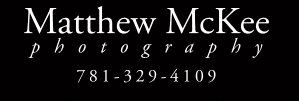I get this question sometimes, when I am talking about my photography to owners of companies who are, understandably, more concerned about making payroll than discussing where art and commerce intersect (that's marketing at its finest, folks!). I also get it from graphic designers who are used to responding to orders from their clients.
Yes, I get that not every photograph has to be a museum piece. Sometimes, a product is just a product. But, shouldn't the photoshoot be the best value that you can get?
I don't mean "spend as much as you can." That would be silly, self serving, and, ultimately, deadly for my business.
The value, as any entrepeneur can tell you, is not just in the final object (photo, product, whatever). It is in the process, in the plan, and in the execution.
Many times, the story I have been told runs like this: "We did it ourselves. Twice. And, it was okay but...[retouching fees, didn't look quite like x...] "
Or: "We found this picture online. It was short money. We put it on the cover of our brochure. [So did our competition, it was too generic, it wasn't our product/people/service]."
Even worse: "We downloaded this picture from someone's photo sharing site. And, now we have a cease and desist letter, plus a court date."
So, you love the portfolio, but it isn't quite your product type/looks real artsy/looks expensive. That's okay.
What you do with it is use it as a conversation starter. Find a photo that is nice and ask the photographer the key question: "If you were going to photograph my product, how would you approach it?"
If the photographer asks about the goal of the photograph, the value of the image to you, your company and your potential customers, you have someone who will collaborate with you and work the intersection of art and commerce to your advantage!
--
The picture of the custom built motorcycle above was created in an iron fabrication company down in Rhode Island a few years ago. We used a combination of light sources to get the nice highlights, including a 12' by 12' silk on two high boy stands on the camera left. On camera right was the biggest softbox I had in my collection. Various white and silver cards were distributed around to keep the highlights clean. A smoke machine gave us the atmosphere in the background and the light streaming in through the windows was courtesy of Mother Nature.











